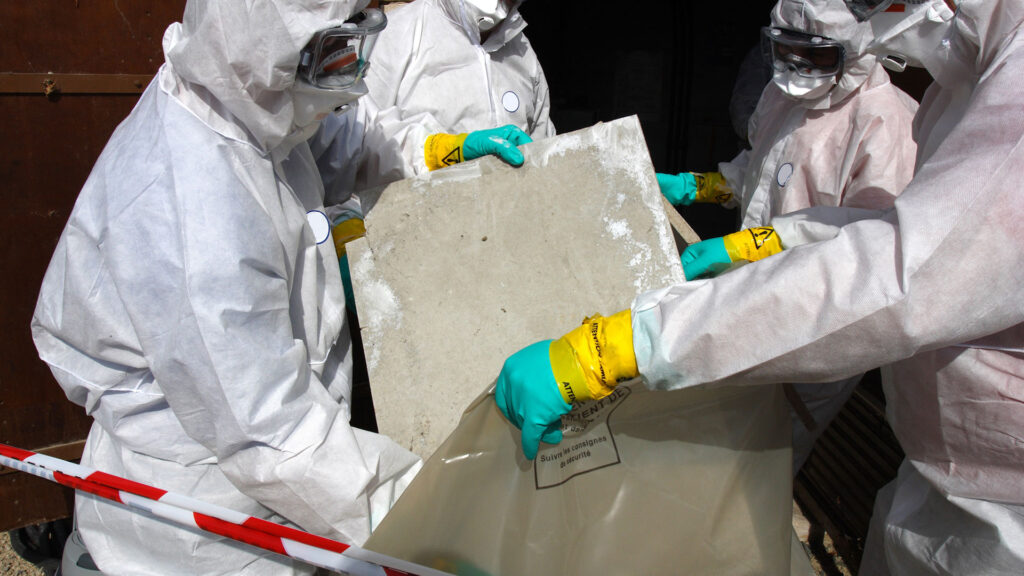Asbestos is safe – as long as you leave it alone. If the microscopic fibers are emitted into the air, the naturally occurring silicate mineral is a great danger to people’s health.
Because of this danger, mesothelioma and asbestos lawyers manage many asbestos cases annually. They may request money from asbestos trust funds for victims who have gotten sick from breathing in the fibers or may file individual lawsuits.
If you wish to file a claim, contact an asbestos attorney ASAP.
The Use of Asbestos in the Marketplace
Asbestos was widely used in various building materials until the 1980s. The partial cutoff date for manufacturing asbestos-containing products was August 25, 1989. While the EPA banned the manufacture of asbestos in products in the US, it still finds its way into this country through imports. Aftermarket brakes and brake lining, industrial gaskets, and materials used in construction can still contain this harmful material.
Why Asbestos Was Used in Products
While asbestos was once known for its qualities, such as fire resistance, durability, and insulation properties, it can trigger severe health conditions after long-term exposure. People who have worked around asbestos or lived in homes with asbestos may contract lung cancer, mesothelioma (a type of cancer that affects the linings of the abdomen and lungs), or asbestosis (a chronic lung disease).
So, where can the material be found in the home and at construction sites? To answer that question, we first have to look at the products that contain it.
Products that Contain Asbestos
You can find asbestos in the following products and areas of a home or business:
Insulation

Asbestos can be found in insulation materials that insulate pipes and attic areas.
Therefore, the material was used to insulate furnaces, boilers, and heating system pipes. It was also used in products applied to surfaces for fire protection and insulation. Loose-fill asbestos insulation was used to fill attics with thermal insulation to keep a building warm during the winter and cooler during the summer.
Building Products
Your home or business may contain asbestos in roof shingles, siding, or pipes because of the use of cement in the products. You may also have asbestos on your floor. Asbestos was used in vinyl floor tiles, adhesives, and sheet flooring.
Some drywall and joint compounds also contained asbestos fibers. In addition, textured plasters and paints were made with fibers and used for decorative purposes.
Fireproofing
What made asbestos so famous was its fire resistance. For example, you’ll find asbestos in fireproof doors.
Asbestos also offers heat-resistant properties, making it a popular choice when manufacturing sealants and gaskets.
Asbestos was used in electrical insulation products such as electrical panels and wire coatings.
Auto products containing asbestos include clutch facings and brake pads.
Asbestos on Construction Sites
Asbestos becomes especially dangerous when it is released into the air and inhaled. Therefore, asbestos lawyers often assist clients who once worked in construction and inhaled asbestos-containing materials (ACMs).
Workers cutting, sanding, or sawing were exposed to the silicate mineral. Some employees were exposed when they repaired pipes, boilers, and similar equipment containing ACMs. Maintenance workers involved in drilling activities often came into contact with asbestos.
Friable ASMs
Over time, ACMs may easily crumble or pulverize and become airborne. It can happen from water damage, physical impact, or age. As a result, brittle asbestos-containing materials increase the risk of exposure.
Determining the Risk of Getting an Asbestos-Related Disease
As noted, most of the harm that asbestos causes is due to inhalation of the mineral. Therefore, your risk increases if you are exposed to the material for a longer time and if the amount you inhale is higher. Even if you had a low level of exposure, the material is dangerous because of its buildup in the lungs over time.
- Types of Fibers – Asbestos fibers may be different, with some more hazardous than others. For instance, amphibole asbestos, such as amosite (brown) asbestos and crocidolite (blue) asbestos, are deemed more carcinogenic than chrysotile (white) asbestos. While blue asbestos is considered the most dangerous, white asbestos is frequently swallowed and inhaled.
- Susceptibility – Some people are more susceptible to asbestos because of genetic factors, pre-existing lung issues, or other health conditions. Smokers exposed to asbestos also have an increased risk of developing lung cancer when compared to people who don’t smoke.
- Asbestos Locations in Homes – If your home was built before the early 1980s, you’re more likely to come across asbestos in your home’s building materials. If the materials stay intact, they won’t necessarily cause an immediate risk to your health. The danger arises when ACMs are disturbed, worn, or damaged, allowing the mineral to escape into the air.
Other Places and Activities that Increase Exposure
While asbestos exposure is commonly associated with buildings and construction sites, it can also be found, as noted, in automotive parts and components. Therefore, auto repair workers may be exposed to the mineral if working on an older car.
Shipyards
Shipyard workers may also be exposed to asbestos used in shipbuilding for fireproofing, insulation, and other applications.
Railroads
The substance is also found in railroad products, primarily in locomotive insulation, gaskets, and brake shoes. Engineers, conductors, and railroad maintenance personnel may have been exposed if they worked around older equipment and trains.
Mining and Milling Sites
Some types of soils and rocks may also contain asbestos fibers. Therefore, people involved in milling, mining, or processing minerals such as talc or vermiculite may have been exposed to asbestos, especially if their employer did not take the proper precautions.
Waste Management and Disposal
Workers who disposed of and transported asbestos waste may also have been exposed to asbestos over time. Again, if the proper precautions weren’t taken, they have a pronounced risk of developing an asbestos-related disease.
Contact an Asbestos Lawyer Today
It takes an experienced asbestos attorney to manage asbestos cases. If you were exposed to asbestos and have contracted a disease, such as mesothelioma, asbestosis, or another related illness due to asbestos exposure, you need to speak to an attorney.
An asbestos lawyer can help get maximum compensation for paying the expenses and recovering the financial losses related to your disease.



